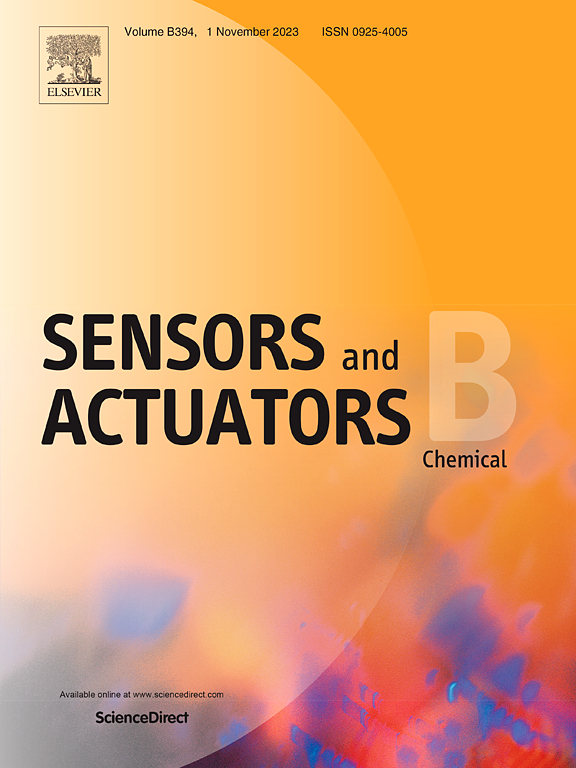Enhanced room-temperature NO₂ sensing via abundant edge interfaces on graphene oxide-decorated silicon
IF 8
1区 化学
Q1 CHEMISTRY, ANALYTICAL
引用次数: 0
Abstract
NO2 gas sensing properties of the graphene oxide-decorated silicon (GO/Si) materials with abundantly exposed edge interfaces are studied. GO sheets are intermittently covered on the silicon surface treated with hydrophilic agents through a spin-coating process, enabling the formation of a sensing layer with optimized active surface area and diversified adsorption sites, which facilitate gas sensing. As the sensitive material in a conductometric gas sensor, far different from the respective planar Si and pristine GO, which exhibit poor repeatability and an undesirable n- to p-type response transition, the GO/Si brings about a qualitative change in sensing behavior, showing consistent p-type response to all tested concentrations and exhibiting good reproducibility. More interestingly, the coverage of GO can be simply adjusted by the hydrophilic treatment time. At an optimal hydrophilic treatment time ∼ 1 second, the GO/Si sensor demonstrates an ultra-low theoretical detection limit of 188 ppt, along with high response, good selectivity, and long-term stability. The mechanisms behind the outstanding sensing performance are discussed, considering the exposed GO/Si edge interface and the synergistic effect of GO and Si.
求助全文
约1分钟内获得全文
求助全文
来源期刊

Sensors and Actuators B: Chemical
工程技术-电化学
CiteScore
14.60
自引率
11.90%
发文量
1776
审稿时长
3.2 months
期刊介绍:
Sensors & Actuators, B: Chemical is an international journal focused on the research and development of chemical transducers. It covers chemical sensors and biosensors, chemical actuators, and analytical microsystems. The journal is interdisciplinary, aiming to publish original works showcasing substantial advancements beyond the current state of the art in these fields, with practical applicability to solving meaningful analytical problems. Review articles are accepted by invitation from an Editor of the journal.
 求助内容:
求助内容: 应助结果提醒方式:
应助结果提醒方式:


